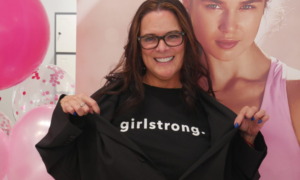The Youth Work Institute at the UM Extension Center for Youth Development is a resource and advocacy center for programs that provide leadership and civic engagement opportunities for youth. The institute receives funding from the McKnight Foundation and the Minnesota Department of Education.
Target audience: Practitioners who work directly with youth ages 11 to 18 in community settings during non-school hours.
Dissemination: This toolkit is one of five developed by the Youth Work Institute, designed for its Quality Matters program improvement project. Others include “Reframing Conflict” and “Providing a Welcoming and Engaging Atmosphere.” The kits were designed by the institute in partnership with the Center for Youth Program Quality (formerly the High/Scope Education Foundation) and the center’s youth program quality assessment tool, the YPQA.
In addition to making the Youth Voice toolkit available online, the institute periodically offers a four-hour “ToolKit Session” in the St. Paul, Minn., area, providing an overview of the five toolkits and offering tips on how to utilize them. There is a nominal fee for the instructive session.
Uses: Agencies that want to ensure that youth voices have a consistent and meaningful role in programming and that want to help youth develop as civic leaders will find this toolkit helpful in getting the ball rolling.
Tools: The kit includes short bulleted lists, engaging graphics and reproducible handouts that remind and motivate youth workers to seek the benefits of youth engagement. Those tools include:
• A research overview on the benefits of youth voice and engagement.
• The principles of youth voice.
• Youth Program Quality Assessment Pyramid.
• A comparison of the traditional model of “youth as informants, recipients and receptacles” versus a model that focuses on “youth as facilitators, mentors and evaluators.”
• Ten tips for engaging young people, for staffers to post on their office walls.
• Ideas on taking a program’s “pulse,” or periodically checking the level of youth voice and engagement.
• A framework for facilitating daily focused conversations with youth on meaningful topics.
• One- and two-page handouts titled, “Principles for Supporting Youth Voice,” Strategies for Voice Development,” “Levels of Youth Participation” and “Why Involve Young People?”
The kit also includes step-by-step directions on how to facilitate a small group work session for youths and adults in a program. The session agenda includes three stand-alone group exercises:
1. An “Introduction” that asks participants to move to the four corners of the room, labeled with signs indicating their level of agreement or disagreement with five statements, such as, “Young people have the same rights as adults to make their hopes, fears, dreams and realities known to society.” Participants are asked to discuss their answers in their corners, and then with the larger group.
2. “Current Reality,” in which participants map the role of youth voices in their program’s decision making by noting the points at which decisions are made, and graphically noting whether those decisions are youth-directed, adult-directed or shared by youth and adults.
3. “Poetry in Motion,” which helps participants to shape the concepts they’ve learned into a mission statement. The youths use 30 youth word cards to complete the sentence, “Effective youth voice and choice …,” by arranging their selected cards on a wall.
Finally, the kit includes a commitment chart on which individuals pledge to provide opportunities and support for youth voice in specific ways through their activities, their classes and sessions, the program and the organization.
Most Valuable Tool: The “Current Reality” activity, “Mapping Youth Voice in Decision Making,” will help programs see (perhaps for the first time) how youth perceive their opportunities for voice/choice within the program – despite what the adults may feel they’re offering.
Adaptability: The tools are not specific to any particular type of program, other than one that engages both youth and adults in some capacity. Because access to the kit is free and the activity tools require only a single facilitator, program size and budget are not limiting factors. The activities are adaptable to as few as three participants forming one small group, or as many as 40 in a large group, divided into small working groups. The static tools (such as handouts) are crisp, contain colorful graphics and are easily reproducible for dissemination to a wide audience.
Outcomes: According to Deborah Moore, the institute’s associate program director, the toolkits have been used by more than 100 youth programs in Minnesota in the past year, in conjunction with the Quality Matters project.
While data and reports regarding the kit’s effectiveness are due to be released this fall, Moore said the institute has seen “significant changes in [local] programs as a result of the toolkits and related Quality Matters efforts.” She cited a 92 percent increase over one year in the youth engagement scores of an after-school program at the Richard Green Central school in Minneapolis, as measured by the quality assessment tool, YPQA.
“The toolkits were a significant part of the training efforts conducted at this site, so effect looks promising,” Moore said.
Contact: Deborah Moore, associate program director, Youth Work Institute (612) 625-7813, ddm2@umn.edu.































